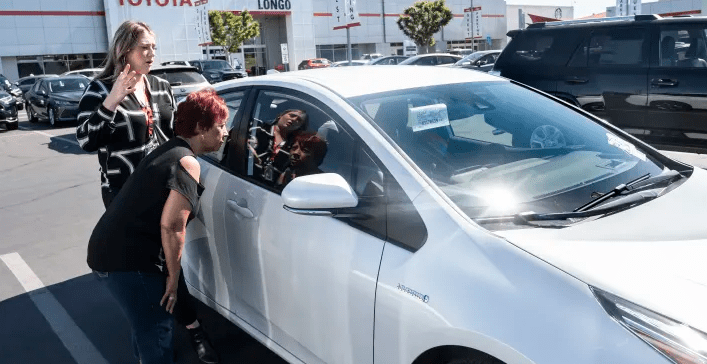Finding the best car insurance policy can be a daunting task, especially with the multitude of options available in the market. Each insurance company offers different plans with varying rates, coverage, and customer service quality. The process of sifting through these options can feel overwhelming. However, with the right strategy, comparing car insurance online can be quick, easy, and informative. In this article, we will guide you step-by-step on how to find and compare the best car insurance policies online, ensuring you get the coverage you need at a price that fits your budget.
Why Compare Car Insurance Online?
Shopping for car insurance online has several advantages over traditional methods:
- Convenience: You can compare multiple insurance providers from the comfort of your home without needing to visit offices or make phone calls. Online tools streamline the process, allowing you to gather quotes and compare coverage options in minutes.
- Cost Savings: Comparing car insurance rates online allows you to spot the best deals quickly. Insurers offer different rates based on various factors, and by reviewing multiple options, you’re more likely to find a policy that fits your budget.
- Transparency: Online comparison tools provide a transparent overview of the available plans, allowing you to easily assess what each policy offers. This prevents you from being swayed by aggressive sales tactics and ensures you make an informed decision.
- Customization: Many online insurance platforms let you customize coverage options and see how changes impact your premiums in real time. You can experiment with different coverage levels and deductibles to find the perfect balance between cost and protection.

Step-by-Step Guide to Comparing Car Insurance Online
To make the process of finding and comparing car insurance online as simple as possible, follow these detailed steps:
1. Understand Your Coverage Needs
Before diving into the process of comparing car insurance, it’s essential to have a clear understanding of your coverage needs. Car insurance policies come with various levels of protection, and not all drivers require the same coverage. Common coverage types include:
- Liability Coverage: This covers damage or injuries you cause to other people or their property in an accident. Most states require minimum liability coverage, but it’s wise to opt for more extensive coverage for better protection.
- Collision Coverage: This pays for repairs to your car if you’re involved in an accident, regardless of who is at fault.
- Comprehensive Coverage: Covers non-collision-related damage to your vehicle, such as theft, vandalism, or natural disasters.
- Personal Injury Protection (PIP): Covers medical expenses for you and your passengers after an accident, regardless of fault.
- Uninsured/Underinsured Motorist Coverage: Protects you if you’re involved in an accident with a driver who doesn’t have insurance or lacks adequate coverage.
Assess your driving habits, the value of your vehicle, and the level of financial protection you need. If your car is older, you may opt for liability-only coverage, while a new or expensive vehicle may warrant full coverage with higher limits.
2. Collect Necessary Information
To get accurate quotes, you’ll need to provide personal and vehicle information to the insurance companies. Prepare the following details:
- Personal Information: This includes your name, address, date of birth, and marital status.
- Driving History: Be ready to disclose information about any tickets, accidents, or claims within the past 3-5 years.
- Vehicle Information: You’ll need the make, model, and year of your car, as well as its Vehicle Identification Number (VIN).
- Current Coverage: If you already have car insurance, it’s helpful to have a copy of your current policy handy. This will allow you to compare similar coverage levels.
3. Use Insurance Comparison Websites
There are several websites and tools available that make it easy to compare car insurance quotes from multiple providers at once. These platforms act as intermediaries, gathering quotes from various companies based on the information you provide. Some popular car insurance comparison websites include:
- The Zebra: This is one of the most comprehensive comparison tools, providing quotes from a wide range of insurers.
- Gabi: Gabi analyzes your current policy and finds cheaper alternatives by comparing quotes from various providers.
- Compare.com: Offers a simple, user-friendly interface that allows you to compare quotes from multiple insurers side by side.
- Policygenius: While primarily known for life insurance, Policygenius also provides a helpful tool for comparing car insurance rates.
Simply enter your personal and vehicle information, and the comparison website will provide you with quotes from various insurers. From there, you can filter and sort the results based on factors such as price, coverage, and customer reviews.

4. Compare Coverage Options and Limits
Price isn’t the only factor you should consider when choosing a car insurance policy. While it’s tempting to go for the cheapest option, you also need to ensure that the policy offers adequate coverage for your needs. Here are some key factors to evaluate when comparing car insurance policies online:
- Liability Limits: Make sure the liability coverage limits meet or exceed your state’s minimum requirements. It’s also a good idea to increase your limits if you can afford to, as the minimum may not be enough to cover all damages in a serious accident.
- Deductibles: A higher deductible will lower your premium but will also require you to pay more out of pocket in the event of a claim. Compare deductible options to find the right balance between affordability and risk.
- Additional Coverage: Some insurers offer additional coverage options, such as roadside assistance, rental car reimbursement, or gap insurance. Consider whether these extras are worth the cost for your specific situation.
- Exclusions: Review the policy exclusions carefully. Exclusions are situations in which the insurance company will not provide coverage, such as certain types of damage or driving behavior.
5. Read Customer Reviews and Ratings
Once you’ve narrowed down your choices based on price and coverage, it’s essential to evaluate the quality of the insurance company itself. An insurer’s reputation and customer service can make a big difference, especially when it comes time to file a claim. Here’s how to assess an insurer’s reputation:
- Customer Reviews: Websites like J.D. Power, Trustpilot, and Better Business Bureau (BBB) allow customers to leave reviews of their experiences with insurers. Pay attention to how customers rate the company’s claims handling, billing, and customer support.
- Financial Strength Ratings: It’s crucial to choose an insurer with solid financial strength, as this ensures they will be able to pay out claims when needed. Companies like A.M. Best and Standard & Poor’s provide ratings that indicate the financial stability of insurance companies.
- Claims Process: Look for feedback specifically related to how easy and efficient the claims process is. A low premium won’t do you much good if the insurer is difficult to work with when you need to file a claim.
6. Check for Discounts
Most car insurance providers offer a variety of discounts that can lower your premium. Be sure to ask about any available discounts when comparing policies online. Some common discounts include:
- Good Driver Discount: Many insurers reward drivers who have a clean driving record with a discount.
- Multi-Policy Discount: If you bundle your car insurance with other policies, such as homeowners or renters insurance, you could receive a discount.
- Multi-Vehicle Discount: Insuring more than one vehicle with the same company can lead to savings.
- Safe Vehicle Discount: Cars equipped with advanced safety features, such as anti-lock brakes or electronic stability control, may qualify for discounts.
- Usage-Based Insurance Discount: If you drive infrequently or practice safe driving habits, enrolling in a usage-based insurance program can reduce your premium.
- Good Student Discount: Young drivers who maintain good grades in school may qualify for reduced rates.
7. Adjust Coverage Levels to Fit Your Budget
Once you’ve found a few policies that meet your coverage needs and come from reputable insurers, you can adjust the coverage levels and deductibles to fine-tune your premium. Many comparison websites allow you to experiment with different coverage options in real time, showing how changes in your policy affect the price. For example, increasing your deductible will lower your premium, but you’ll need to ensure you can afford to pay the higher amount if you need to file a claim.
8. Look for Local and Regional Insurers
While national insurance companies tend to dominate online comparison tools, don’t overlook local and regional insurers. Smaller companies may offer competitive rates and more personalized service compared to larger insurers. You can often find these companies through regional comparison websites or by searching directly for car insurance companies in your state or area.
9. Contact Insurers Directly for Additional Information
Even after comparing quotes and policies online, it’s a good idea to contact the insurance companies directly to ask any specific questions you may have. Online quotes are often estimates, and speaking with an agent can provide clarification on coverage, discounts, and the claims process. This is also a chance to negotiate your premium or ask if they can match a competitor’s offer.
10. Review and Finalize Your Policy
Once you’ve selected the best car insurance policy, review all the details carefully before finalizing your purchase. Ensure the coverage limits, deductibles, and premium match the quote you received online. You can usually complete the purchase process online through the insurer’s website, though some companies may require you to speak with an agent to finalize the policy.
Conclusion
Comparing car insurance online is a straightforward process that can save you time, money, and stress. By following the steps outlined in this guide—understanding your coverage needs, using comparison tools, evaluating customer reviews, checking for discounts, and adjusting coverage levels—you can easily find the best car insurance policy for your situation. Remember to take your time, review multiple options, and don’t just focus on price. The right car insurance policy will provide you with both the coverage you need and peace of mind, knowing you’re protected on the road.




